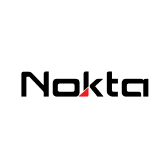Leaderboard
Popular Content
Showing content with the highest reputation on 09/13/2019 in all areas
-
Was debating on taking my AT Pro or try my luck with the Sea Hunter at local pond I have hit before where there is a sandy beach with little trash. Ended up with the Pro and snagged this bracelet 14k 1.42grams, rest of the jewelry is gold plated but still gets your blood moving when you see it in the water. Very tricky fishing the earings out through my scoop and lost a few others as they were just too small for me to see in the water. For those that still use the AT Pro just set it to zero mode and turn off the iron audio. I fly by audio mostly anyways and occasionally look at the vid.6 points
-
There is a lot of meat in this article! https://www.popularmechanics.com/adventure/outdoors/a20066497/shawn-ryan-ground-truth-gold-rush/4 points
-
I saw some of the guys in Australia make a Trumpet to deflect the sound upward from the speaker on the sdc. Great idea, but shipping was a bit much, so I cut a 90 pcv fitting in half and used velcroe to attach. Cheap little project and does add a noticeable increase in sound coming up from the speaker.3 points
-
Rule 1---- Remember you are learning. Rule 2---- Start where you know Gold has been found. Rule 3---- Know what size most of the gold was found there, then hunt for a bit small gold. Rule 4---- Know what depth most of the gold was found there, then hunt at an appropriate swing speed. Rule 5---- Have many target Buried in a 10 foot square of the size in Rule 3, and include a dime and a Dollar coin. Now swing your detector first at a pace you think is correct then go down in speed in a few steps. Rule 6---- Ask someone else for advice, Now you will be able to sort the Gold from the sh!t of the advice given.3 points
-
This was a rather large update. Not so much in any of my reviews but a major shuffle in prices which changes the equation on some units as far as desirability. Steve's Guide to Gold Nugget Detectors Here are the highlights. THIS IS NOT THE FULL REVIEW, IT’S THE CHANGES ONLY.... FOLLOW THE LINK ABOVE TO READ THE FULL REVIEW! The Nokta/Makro Gold Racer dropped from $599 to $509 putting it in direct competition with the Fisher Gold Bug (basic model $449) and Minelab X-Terra 705 Gold at $499 plus the Fisher Gold Bug Pro at $549. That's a killer deal for a 56 kHz full featured detector. All the Nokta/Makro models had serious price drops, as it appears the U.S. importer was keeping prices artificially high. Nokta/Makro stepped in and corrected the situation, leading to the decreases. The Nokta/Makro Gold Kruzer was reduced from $749 to $636, a couple bucks less than the Garrett AT Gold but the Kruzer is 61 kHz and comes with two coils. This effectively puts the AT Gold out to pasture as a “new with warranty” nugget detector option in my opinion unless Garrett lowers the price. Waterproof, built in rechargeable battery, wireless, 61 kHz and two coils... the Gold Kruzer may be the best package price available right now in a VLF nugget machine. The Tesoro Lobo SuperTRAQ was deleted from the list. Tesoro is out of business, and although a few of these may be on dealer shelves still the is no warranty on them so they are gone as far as I am concerned. The Nokta/Makro AU Gold Finder with two coils came down from $799 to $679, the same price as the now departed Tesoro Lobo. The Minelab Gold Monster went UP to $849! I still have it as a "Steve's Pick" but that could change to the White's Goldmaster 24K if White's gets more coils out. More and more users are giving the 24K a thumbs up. The 24K is $729 but do remember the Monster comes with two coils and the 24K just the one now that the Intro deal is over. My "Steve's Picks" are aimed at first time buyers so I am sticking with the Monster for now due to simplicity compared to other less expensive but more complicated options. The same reason I am still showing the Gold Bug basic as a pick - it's simple and effective. The XP ORX dropped from $899 to $795 with a $649 wired headphone option. At $649 it's a good deal. A note on the Minelab GPX 4500 - rumored to be discontinued soon but still on Minelab website as current. And finally Minelab SDC 2300 increased from $3750 to $3799 No doubt about it, competition really heated up in 2019 with lots of pressure on VLF prices. Now if we could get some competition going in the PI detectors in both price and ergonomics things would be great!2 points
-
Hi guys. Been really sick, still am kind of, recovered about 50%. But came back and saw some notifications. Two can't find. But, I reckon before I got sick I shot off at a member here and may have got it wrong. So, you know who you are and no hard feelings mate, my bad this time. To the Boss, Steve, same, my bad. Still not right though, real bad virus. Haven't felt like this in over 20 yrs. Got fed up of laying around coughing, sweating, nausea so got out. Felt great, kind of, short sessions though and glad to get home. But small wins regardless. 1st pic at the head of a deep lead in the very very last throw outs going up a mountainside. 2nd total virgin ground, very scattered, no rhyme or reason, been there before and it's like "toss a coin" direction you go.2 points
-
Minelab will be premiering an exciting new video on our YouTube channel on Saturday, September 14 at 7:00 PM GMT.2 points
-
Introducing the Makro Gold Kruzer metal detector, new for 2018. The Makro Gold Kruzer is available now from select dealers. The 61 kHz Gold Kruzer breaks new ground by being the lightest weight highest frequency waterproof detector on the market. Be sure and read the detailed review by Steve Herschbach at the bottom of this page below the specifications list. The Makro Gold Kruzer comes standard with a 10" x 5.5" concentric coil plus a 4" x 7.5" DD coil and has one optional coil available at launch. The Gold Kruzer has proprietary 2.4 Ghz wireless headphones included. The big announcement of note however is the very high 61 kHz operating frequency, making this one of the hottest machines available on tiny non-ferrous targets, and the only one waterproof to over 5 meters (16.4 feet). There are already a number of detectors on the market operating in the over 40 kHz region and the basics of this high frequency detection have been covered well for at least twenty years. In other words, if all a person wants is a detector running in a high frequency threshold based all metal mode, there are quite a few options to choose from. What makes the Gold Kruzer interesting is that as far as I can recall, nobody has made a detector before where the primary design intent is jewelry detecting. More to the point with the Gold Kruzer - detecting for micro jewelry. Micro jewelry has no exact definition but basically just means very small, hard to detect jewelry. Things like thin gold chains, or single post earrings. Most standard coin type detectors are weak on these sorts of small targets, if they can even detect them at all. Up until now people had to choose between coin detectors that have the features but are weak on micro jewelry targets, or use dedicated gold prospecting detectors hot on small targets, but very limited in features. What that usually means is little or no discrimination features. Makro Gold Kruzer for detecting jewelry, gold nuggets, and more Makro has gained attention as a company that listens to its customers. The new Gold Kruzer model is the perfect example of that, creating a unique machine based almost solely on feedback provided by customers in the last couple years. The Micro Mode on the new Gold Kruzer is a direct nod to those who want a detector for hunting micro jewelry and possibly even for gold prospecting, but who do not wish to give up the features available on most detectors today. In fact, Makro goes a step beyond, with the Gold Kruzer sporting features not included on many detectors today. These would include being waterproof to ten feet of more (16.4 feet with the Gold Kruzer), built in wireless headphone capability, and the ability to receive firmware updates via the internet. The result is a new detector with a unique feature set. There is literally no other detector made right now operating over 40 kHz that is fully submersible. Built in wireless and internet updates are frosting on the cake. Official Makro Gold Kruzer Page Makro Gold Kruzer Full Color Brochure Makro Gold Kruzer Instruction Manual Forum Threads Tagged "makro kruzer" Makro Metal Detectors Forum Makro Gold Kruzer Technical Specifications* Internet Price $636 Technology Induction Balance (IB) Frequency 61 kHz Autotune Mode(s) iSAT Intelligent Self Adjusting Threshold Ground Rejection Grab, Manual, & Tracking Soil Adjust Yes Discrimination Visual ID & Tone ID, Tone Break Adjustment Volume Control Yes Threshold Control Yes Tone Adjust Yes Audio Boost Yes Frequency Offset Yes Pinpoint Mode Yes Audio Output Speaker & Waterproof Headphone Socket Hip Mount Shaft Mount Only Standard Coil(s) 10" x 5.5" Concentric & 4" x 7.5" DD Optional Search Coils Yes Battery LiPo Rechargeable (optional external AA pack available) Operating Time Up to 19 hours Weight 3.0 pounds Additional Technology iMask noise suppression technology, backlit screen, save settings Notes Includes 2.4 Ghz wireless headphones, waterproof to 5 meters (16.4 feet) *Notes on Technical Specifications - Detailed notes about the specifications listed in this chart. Detailed Review Of Makro Gold Kruzer by Steve Herschbach I was asked to review a new gold detector in the fall of 2014 from a company I had never heard of before then – the FORS Gold by the Nokta company based in Istanbul, Turkey. I was pleasantly surprised to find the Nokta FORS Gold to be a very capable 15 kHz VLF detector that could serve well not just for nugget detecting, but almost any detecting tasks. The FORS Gold did have some odd design quirks, like the use of mechanical rocker switches instead of touch pads. I listed a few of these things, expecting that would just be the way it is. I was almost shocked when within a short period of time Nokta fixed or changed every item I had mentioned in my review as possibly needing improvement. This was unusual as normally once a machine has gone into production manufacturers are extremely resistant to design changes, especially changes in the physical design. It was a sign of what people have now found to be fact – that this company is serious about listening to their customers as a prime driver for product improvement. New Makro Gold Kruzer It was revealed that Nokta had a sister company called Makro, and the two officially combined forces shortly after I made my review. In other words, both Nokta and Makro now share the same ownership and management, but continue to be marketed separately under the two brand names. The detector models that each sell are unique, but there is an obvious sharing of the underlying technology between some models that the two brands sell. I had commented at the time that I would prefer a more standard configuration for a LCD based detector rather than the non-standard configuration as presented by the FORS Gold. By the fall of 2015 I was using the new Makro Gold Racer, which incorporated many ideas I had lobbied for over the years with detector manufacturers. I had been trying for some time to get somebody to create a metal detector that ran at nugget detecting type frequencies over 30 kHz but with a full target id system. It seems strange now but at that time nobody made such a detector. The Makro Gold Racer was quite unique in 2015 by offering a detector running at 56 kHz that also offered a full range LCD based target id system and dual tone based audio discrimination modes. This made it a detector useful not just for nugget detecting, but low conductor hunting in general for relics and jewelry. It is even a halfway decent coin detector for regular park type scenarios. The versatility and well thought out control scheme scored points with me, and I still have the Makro Gold Racer even after selling most of my other detectors. It seems that the moment the Makro Gold Racer hit the streets, that everyone else was working on similar ideas, as other detectors running over 30 kHz but with a full feature set started to appear on the market. High frequency detecting is suddenly in vogue for more than just gold nugget detecting. The one thing obvious now about the Makro / Nokta partnership is that they never sit still, but continue to work on and release new models at a pace that puts all the other manufacturers to shame. The companies are also big believers in seeking public feedback and then implementing the suggestions to create better products for their customers. This is readily apparent in the progression I have personally witnessed in going from that original Nokta FORS Gold to the new 61 kHz Makro Gold Kruzer just now hitting the market. In less than four years the company has gone from “catching up” to meeting or surpassing detectors made by other companies. ads by Amazon... It should be obvious that the Makro Gold Kruzer is all about gold. This explains the shift from dual tone to monotone audio in the Fast and Boost. Dual tones as employed in the Makro Gold Kruzer can be problematic when hunting the smallest gold targets, especially in highly mineralized ground. It is hard for a detector to get a clean separation of ferrous and non-ferrous targets when the targets are very small. This is because the actual dividing line between ferrous and non-ferrous is not a line at all, but a zone. The Makro Gold Kruzer uses a fairly standard discrimination scale that ranges from 0 – 99. The range from 0 – 40 is considered to be the ferrous range, and 41 and above non-ferrous. Yet the discrimination default for both the Fast and Boost modes is 25. This is because if you bury small gold in highly mineralized ground or large gold extra deep in mineralized ground, the ferrous ground signal can overwhelm the very weak non-ferrous signal. It really is not about the object size. A deep large nugget is a very weak signal just the same as a shallower small nugget, and either can end up reading as a ferrous target. The solution is to lower the discrimination setting into the ferrous range and accept that you have to dig some ferrous items to get all the gold items. This actually applies to any metal detecting. If you dig absolutely no ferrous trash, you are almost 100% guaranteed to be passing up some non-ferrous items reading incorrectly as ferrous. This can be acceptable of course depending on what you are doing, but passing on a deep six ounce gold nugget because it reads ferrous can be an expensive mistake. The Gold Kruzer default discrimination setting for Fast and Boost is 25 instead of 40 for this very reason. Dual tones have issues for this same reason, with decisive results on the weakest targets difficult if not impossible to obtain. The difference is quite small, but monotone is slightly more stable and proficient at working with the tiniest and faintest of signals right at the dividing line between ferrous and non-ferrous, wherever you have set the control to tell the Gold Kruzer where that line is for your particular situation. There is no pat answer as the where to set the discrimination control. It is a judgment call based on experience, but when in doubt, use less discrimination and dig more trash. Welcome to gold detecting! Makro chart showing gold occurring in 0 – 40 ferrous range The Makro Gold Kruzer has a new control that relates to this overlap between ferrous and non-ferrous readings. The Extra Underground Depth (E.U.D.) control acts to directly impact the tipping point between ferrous and non-ferrous readings. The E.U.D. control only works in one of the three discrimination modes and when used on a suspect target that is reading ferrous may reveal by a different tone that it is actually non-ferrous. It is noted in the manual that it can reveal some targets misidentified as ferrous, but it will also give more false positives on ferrous targets. I was unable in the time allowed to figure out just how efficient this control is. In theory you can just set the discrimination lower, digging more ferrous but getting those missed non-ferrous items. Or set the discrimination a little higher, and now examine suspect targets individually by engaging the E.U.D. control momentarily. Finally, you can run E.U.D. on at all times. Is higher disc with E.U.D. on at all times going to get better results than just using a lower discrimination setting? Sadly, I just do not know at this time. I do know it is no magic bullet so the efficiency of employing the E.U.D. control will have to be determined over time by users around the world What? You say you wanted tones? Well, the Makro Gold Kruzer has you covered. The new Micro mode is a three tone mode similar to that on other company models, but running at that hot 61 khz. The 0 – 40 target id range produces a low tone. The 41 – 66 range produces a medium tone, and 67 – 99 range a high tone. Micro mode allows the “ferrous break point” to be adjusted. This is that magic point where you decide what is going to read as ferrous and what reads as non-ferrous. Note that unlike the Fast and Boost modes, the default ferrous breakpoint is set at 40 instead of 25. This is good for coin type detecting but again may be too high for other types of detecting. While in Micro mode you may use the Tone Break control to vary this all important setting. You could mimic the other two modes by setting the Tone Break at 25. Now 0 – 25 will be a low tone, 26 – 66 a medium tone, and 67 – 99 a high tone. Tone Break can only be used to set the ferrous breakpoint. The upper high tone region of 67 – 99 is preset and fixed by the factory with no adjustment possible. You may use the Ferrous Volume setting to control how loud the low tone response is. The medium and high tone responses are set with the main volume control. The discrimination control still functions in Micro mode, with a default setting of ten. Hot rocks and ground responses occur this low on the scale, and so having at least some of the low end blocked or rejected with reduce the number of low tone responses generated by the ground itself. The control can be set as high as you want and will override the other settings, blocking all targets below the desired target id setting. The Makro Gold Kruzer does have a tone control, but it does not allow the tones to be changed in Micro mode. Those are factory preset, with the Tone Break between ferrous and non-ferrous plus Ferrous Volume as the two adjustments you can make. The Tone setting allows the tone of the audio response and threshold to be changed in Gen, Fast, and Boost modes only. Micro was designed first for hunting micro jewelry. Micro jewelry is a loose term that applies to all very small jewelry items, like very thin chains, single post earrings, tie tacks, etc. Micro is perfect for hunting tot lots and beaches and focusing on the “gold range” targets represented by the mid tone reading in Micro mode. Many jewelry hunters consider digging coins a waste of time, and so ignoring high tones can save digging pocket change when the real goal is a woman’s diamond and platinum ring. The Makro Gold Kruzer has a nominal non-ferrous range of 41 – 99 which is a 59 point spread. Normal U.S. coin responses are 63 for a nickel, 83 for a zinc penny, 84 for a copper penny, 86 for a clad dime, and 91 for a clad quarter. The high 61 kHz operating frequency acts to push target id numbers higher and most coins will respond at 83 and higher. I was surprised a zinc penny and copper penny for all intents read the same. The good news is the low conductor range is expanded, which offers the ability to help discern different pull tabs and other trash items over a wider range. This in turn may help eliminate at least a few pesky trash items while hunting gold, although ignoring gold range items of any sort can be risky. Still, with a U.S. nickel reading at 63 and most women’s rings reading under the nickel, you get the 40 – 63 zone as a 23 point range where much of the most valuable jewelry will turn up. The default high tone breakpoint of 66 – 67 is clearly focusing the Gold Kruzer mid-tone on this very important gold range. Do note that large men’s rings and nearly all larger silver jewelry will read above 66 and therefore give a high tone reading. The Gold Kruzer has some obvious applications but there are a couple catches. First, it is running at 61 kHz, which means it is very hot on low conductors, but that it will have just adequate performance on high conductors like silver coins. Second, its extreme sensitivity to low conductors means it will not work well if at all in saltwater or on wet salt sand. Saltwater is a low conductor and will respond quite strongly on the Gold Kruzer, and getting it to not respond to saltwater gives up all the sensitivity to small gold. The Gold Kruzer will work very well around freshwater or on dry sand, it is not intended as a detector for use in or near saltwater. I would suggest the new Makro Multi Kruzer as an alternative to those who want to hunt in and around saltwater on a regular basis. Makro Gold Kruzer with optional 5” x 9.5” DD coil There are many features I could delve into but at over six pages this report is getting long, so I will again refer people to the User Manual for the details. Suffice it to say that the Makro Gold Kruzer has a full set of features like frequency shift for reducing interference, temporary audio boost for the Gen all metal mode, adjustable backlight, and the ability to save settings when the detector is powered down, and more. I got the Gold Kruzer prototype during a period when I was quite busy and the weather was not helping. I did have time to do a few tot lot hunts plus make a trip to the goldfields to evaluate the machine. The Gold Kruzer is well behaved in urban locations, with only a little static from electrical interference sources. I found the new Micro mode to be just the ticket for quickly blasting through a tot lot recovering prime gold range targets. I dug everything as is my practice when learning a detector, and ended up with the usual pile of aluminum foil, junk jewelry, and coins. Nothing special found but no doubt in my mind that the Gold Kruzer acts as intended in this type of setting. There were no surprises in the goldfields. At 61 kHz and in Gen mode the Gold Kruzer is a real pleasure to run, with all the response and nuance one expects from a great threshold based all metal circuit. Boost Mode also works very well as an alternative for small nugget detecting. I had no problem at all finding a couple little bits of gold weighing under a grain (480 grains per Troy ounce) on my first and only nugget hunt so far with the Gold Kruzer. Two tiny gold nuggets found with Makro Gold Kruzer To sum up, the new Makro Gold Kruzer once again ups the ante at Makro. It comes standard with two coils and is fully waterproof for about the same price as the Makro Gold Racer so I would have to assume the Gold Racers days are numbered. The one thing I am not sure about at this time is that the Gold Racer has a 15” x 13” DD coil option. The Makro Multi Kruzer has the 15” coil option, but no such accessory has yet been announced for the Gold Kruzer. This is probably not a concern for very many people, but it bears mentioning. May 2019 Note: The Makro Gold Racer is still in production but the price was lowered to $509. Nokta/Makro have also produced a 15.5" x 13" coil option for the Gold Kruzer. I have no problem at all recommending that anyone interested in a detector with a focus on gold take a very serious look at the new Makro Gold Kruzer. It’s performance on low conductors of any type means that the Gold Kruzer is not just for prospectors and jewelry hunters but may also see favor with some relic hunters who focus of low conductor targets like buttons and bullets. This is a solid detector with 21st century features at a very attractive price. Makro Kruzer Color Brochure ~ Steve Herschbach Copyright © 2018 Herschbach Enterprises1 point
-
From the Cherrypickers' Guide Survival Estimate: 500-1000. Interest among collectors: Very High (this is the highest on their scale). Liquidity Factor: Will sell easily, and often above listed value (also highest on their scale). Of course this assumes collectible condition. 😢 If a small motto, I guess you just have to be satisfied you found one of the two key date 2-cent pieces ever minted for circulation (only behind the 1872). I'd take that.1 point
-
That Rule 8---- Keep that secret till he get to Rule 7 and hope we get there before he learns too much. 😀1 point
-
1 point
-
3 and 4 are the hard ones. I tend to go places that have been pretty much ignored for the last hundred years or so. Usually all I have to go on is free gold was mined there then and maybe a rough total quantity. It is very hard to find more info than that on minor production areas from ago.1 point
-
Thanks. I have no clue why the edges were so beat up. It was in a pine forest that usually destroy copper so it being bronze might explain a lot. Maybe the alloy wasn't mixed as well as it could be Bronze being copper and tin, who knows. Will go back to that area once the frost comes as much of it is shin-knee deep in poison ivy. Does look like a small moto :01 point
-
1 point
-
Dang Busho! I hope I don't get what you had by being exposed to your post. A little detecting cures a lot of things.1 point
-
Get better Busho, sounds nasty. Glad you were able to get out and recover some nice saves. Nothing like gold on the coil to help you feel better.1 point
-
Thanks mate. The 12 Evo, wicked little coil. Usually use the 15 but thought it wise being crook and low on fuel, me, to go light. All up just 6 grams. The better bit 2.4. But saying "just" is not being ungrateful for what I got or "wish it was more" but because it could look more as sometimes gold does. I am 100% grateful for every single bit I get no matter how small. And to anyone who finds anything no matter the size, it's a win. You can't and wont take it with you. 😉1 point
-
I just couldn't figure it out. The old Jeep mysteriously started running much smoother and quieter and became much more stable. I would also say that it's performance somehow increased by 30% or perhaps even 40%. In fact i was so impressed i decided I would invest some time into cleaning it up a bit. As I was mucking out the interior ( forgotten rock samples, sticks and leaves, old sandwich wrappers with sandwiches, dropped nuggets and such) I found Sourdough Scott's missing ferrite ring. I took it out and put it where Scott could pick it up and now the Jeep is back to it's usual squeaky, whinny, worbally self. Mystery solved.1 point
-
I was downhill from Glenn when I found this small Nugget. Haven't weighed it yet but put in on my watch to take the photo for size comparison. In the past, I've used my White's MXT and GMT but this was my first outing with the Nox 800 and standard coil. It was 2" deep and I was using Gold 1, Sensitivity 22, and the factory settings for everything else. It rang up between 2 and 4 with a very solid signal. It's tough hunting those steep tailings piles. I am now scheduled for Hernia Surgery next week!1 point
-
The VX3 and EQ600 are pretty similar detectors. They both offer 3 frequencies selections. They both offer multi frequency choices. Settings are pretty similar as well. VX3 has better graphics, more target id aids, and a better coil selection. EQ600 has a better ground cancel circuit. And you have more control over the audio tones as compared to the VX3. My main beef with the VX3 is that I can't adjust the correlate setting. Its locked into 20 points. My main beef with the EQ600 is that it only offers a peak phase shift target id. I dunno...be a hard choice for someone coming into the hobby today. My advice is that since you have narrowed it down to these two...pick the one that looks like the most fun to hunt with. You'll find stuff with either one..so that extra little thing called enjoyment factor is important. Good luck. HH Mike1 point
-
1 point
-
Unfortunately just the opposite in metal detector land and certainly not just Minelab. There have been some engineers mainly sort of take it on themselves to comment at times. Minelab did have one service person post on Findmall a few times but it was more an anomaly. The truth is very few people at metal detector companies actually metal detect and very few know as much as their customers about metal detecting or even their own products. Those that do may have no people skills. Throw in some fear at management level about what may be said and it's easy for a company to just issue a blanket gag policy. Easy, but rather a poor choice in this day and age in my opinion. Dilek has done more for her company than lots of dollars spent on ads by simply showing up now and then with sensible answers. I really respect her and the company for making that effort where others offer a cold shoulder.1 point
-
1 point





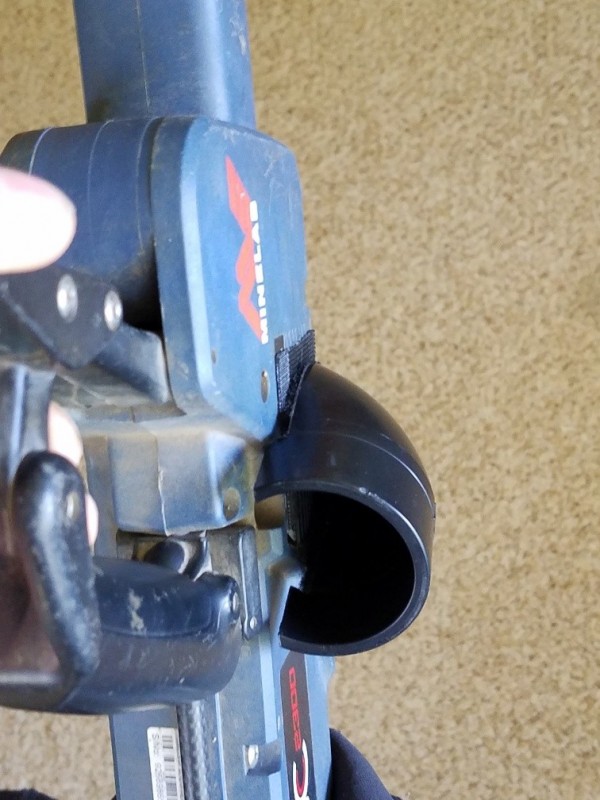
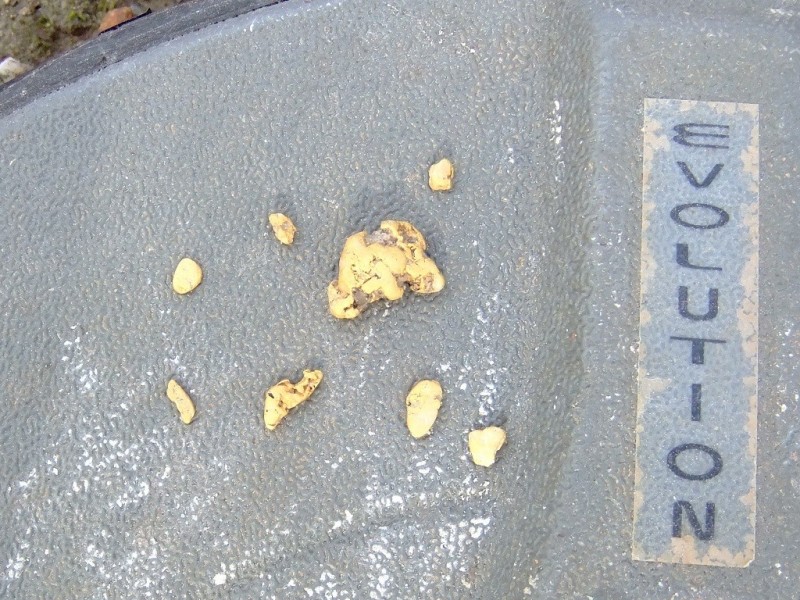
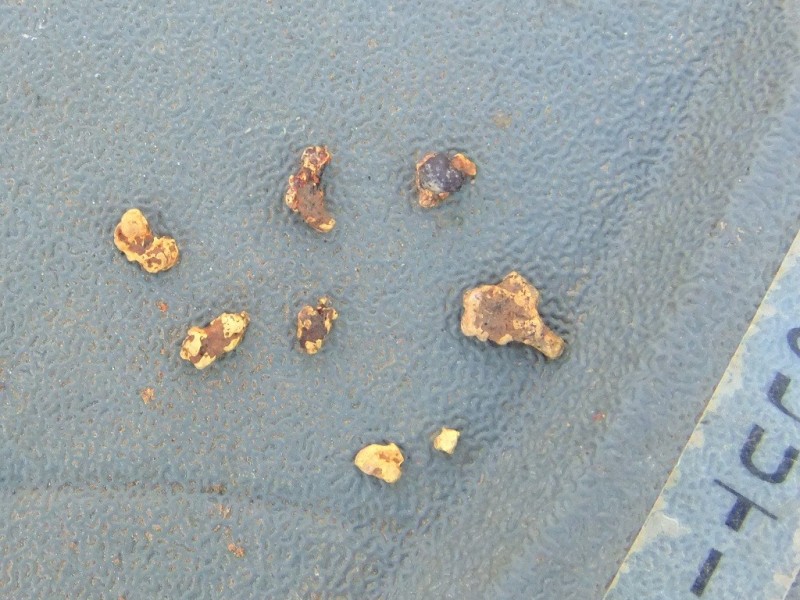
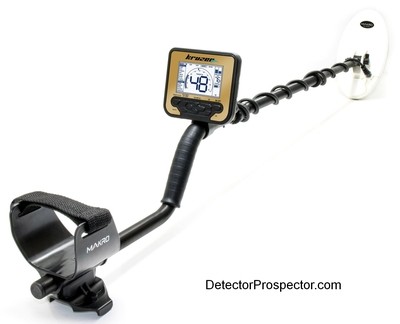


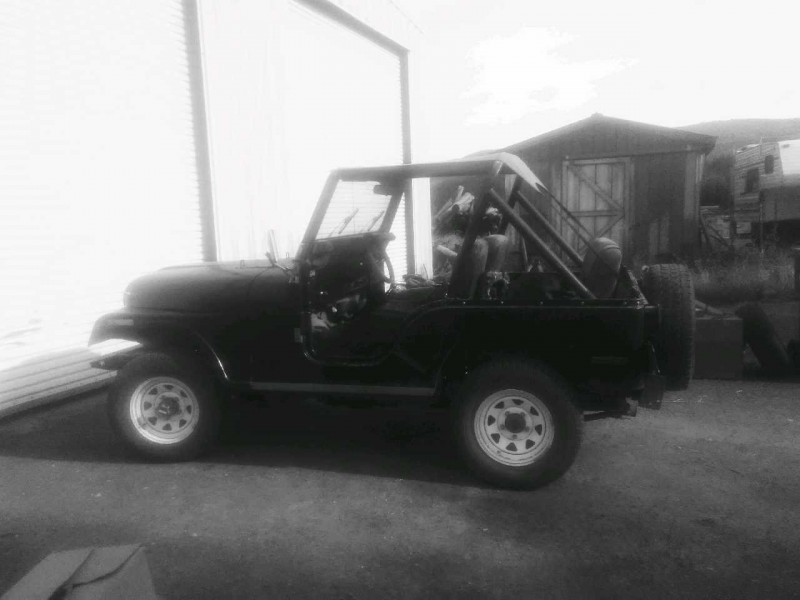

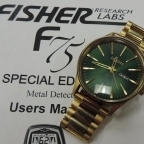
.jpg.d36fcd52325fe8a6a366d3944c8806e4.thumb.jpg.7439025c7a6d125b76c4d4495030cde4.jpg)
